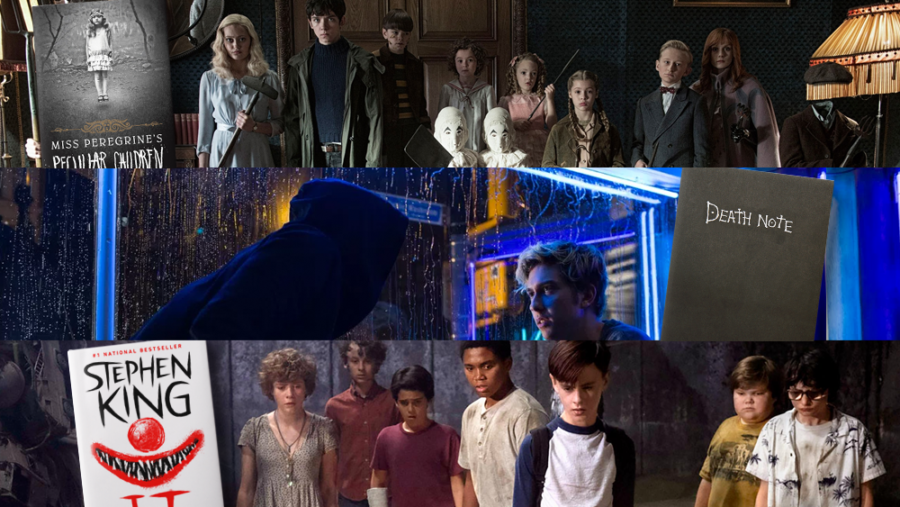From Cover to Cover: Book to Movie Adaptations
For the past month or so, you’ve dedicated all your spare time to reading a highly recommended novel. The news of it being rendered into a movie spreads like wild fire, and once you catch wind of it, a sense of overwhelming joy over comes you. The day it premieres has been marked on your calendar for almost a year now, and you can imagine walking into the theater, buying a large bag of popcorn (no judgment here), and plopping down in the theater seats before watching your favorite book played out on film. Lo and behold, a few days after it premieres, a Rotten Tomatoes reviewer posted about it. 4 out of 10? How can this be? You feel sick; a twisting knot forms in the pit of your stomach. You can’t believe what you just read. So instead of wasting money on a presumably terrible movie, you spend a few minutes searching online, and find a pirated version on some off-shore webpage. After watching what you perceived to be the physical embodiment of Satan himself, the thought of how a screenplay writer can sit there and produce literal trash stews in your mind. Here’s a comparison of publications and their motion pictures; warning, there will be spoilers.
Death Note
Netflix recently released an American live-action movie based on the popular Japanese manga Death Note. The series depicts a gifted high school student, Light Yagami, who finds a mysterious journal labeled, Death Note. The rules in the book read “the human whose name is written in this note shall die” and various other complicated injunctions. The series follows Light and his mission to rid the world of all evil, with the help of his Shinigami Ryuk, and many other friends. However, the Netflix movie version is vastly different from the orginial manga. First off, the mood of the movie is scary while the original manga has heavy comedy and sarcasm. They also completely write out Light’s sadistic, manipulative personality. It is like watching a completely different story. Totally and utterly repulsive. However, if you haven’t read the book, or lack any previous knowledge of the series, this would be a great scary movie to watch. The naturalistic vibe, raw emotion, and constant allurement make it difficult to look away. Director Adam Wingard’s choice in cast gave viewers a shock, especially with Keith Stanfield staring as L, Light’s mortal enemy. The amount of diversity shown in the cast brought this motion picture to my list of Top Ten All Favorites.
Bottom Line: read the book first, but if manga isn’t your thing, stick to the movie.
Miss Peregrine’s Home for Peculiar Children
In 2016, a Tim Burton directed movie, “Miss Peregrine’s Home for Peculiar Children” was made available in theaters. The original book was published in 2011, written by Ransom Riggs, and was a popular young adult fiction. The book details a teenage boy, Jacob Porter, and his struggle with helping uniquely gifted children. Opinions on the film vary, for it was mostly consistent with the book up until the end. Burton’s depiction of the denouement takes the word upheaval to a new level, taking the characters out of their “loop” (loop: a specific moment in time, frozen and repeating every day so that the peculiar children never get old and stay safe) and into another, then having Jacob spend years searching for them after being separated. Burton even brought Abraham Portman, Jacob’s grandfather who died at the beginning of the book, back to life; his reason unknown. The energy of the movie was related to the book, with seemingly irrelevant sense cut out, like when Jacob first finds the photos of Abraham in the abandoned orphanage. Burton managed to capture the essence of the series.
Bottom Line: The film presents a compelling argument regarding the skipping of the original print; nevertheless, Riggs’ books are worth reading first. The emotion he portrays is nearly tear jerking.
IT
Famous for his horror novels, author Stephen King wrote a fiction narrative titled It. The book was published in 1986 and followed seven children and their contact with a shapeshifting being that exploits weaknesses and fear to make praying on them easier. The original movie adaptation premiered in 1990, directed by Tommy Lee Wallace. There was no real big difference between the book and the original movie; it just wasn’t as in-depth as the novel. Of course, capturing a 1,138-page book on screen in merely three hours may be an impossible feat. The narrative produces a bond between the reader and characters, allowing them to become emotionally attached. However, the 2017 modification of the first movie proved to be more violent and less scary. The overuse of cinematic effects takes away from the raw terror given to the audience by the idea of a shapeshifting monster that primarily feeds on children and their fears. Comedic value throughout the film is constantly present from the kid’s reactions to most of Pennywise’s attempts to scare them, giving the audience a chance to relate with the characters. There is definitely room for improvement on both the original and 2017 versions. In every movie adaptation, screenplay writers will always cut scenes, but this production is one of the good ones because it accurately represents the book and lets the viewers feel more than just a heavy sense of fear after exiting the theater.
Bottom Line: This film leaves members of the audience the option to skip reading the book, and just watch the movie, even though Stephen King enthusiasts would crucify you if you ever told that to their face.





